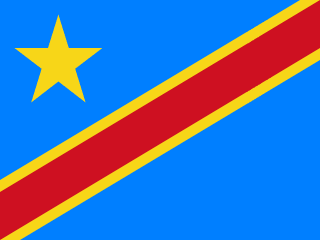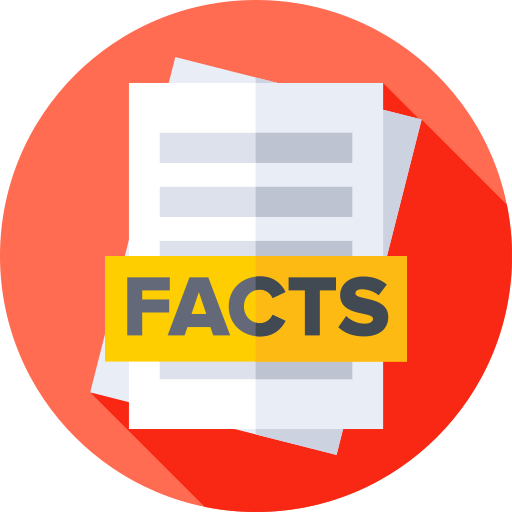DR Congo - Geography

Here, let us take a look at the Geography of DR Congo.
note 1: second largest country in Africa (after Algeria) and largest country in Sub-Saharan Africa; straddles the equator; dense tropical rain forest in central river basin and eastern highlands; the narrow strip of land that controls the lower Congo River is the DRC's only outlet to the South Atlantic Ocean
note 2: because of its speed, cataracts, rapids, and turbulence the Congo River, most of which flows through the DRC, has never been accurately measured along much of its length; nonetheless, it is conceded to be the deepest river in the world; estimates of its greatest depth vary between 220 and 250 meters
. Mother's mean age at first birth is 19.9 years (2013/14 est.) (Note: data represents median age at first birth among women 20-49), whereas, the Maternal mortality ratio is 547 deaths/100,000 live births (2020 est.)Geographical data of DR Congo
| Location | Central Africa, northeast of Angola |
|---|---|
| Geographic coordinates | 0 00 N, 25 00 E |
| Map references | Africa |
| Tarrain | vast central basin is a low-lying plateau; mountains in east |
| Natural Resources | cobalt, copper, niobium, tantalum, petroleum, industrial and gem diamonds, gold, silver, zinc, manganese, tin, uranium, coal, hydropower, timber |
| Natural Hazards | periodic droughts in south; Congo River floods (seasonal); active volcanoes in the east along the Great Rift Valley volcanism: Nyiragongo (3,470 m), which erupted in 2002 and is experiencing ongoing activity, poses a major threat to the city of Goma, home to a quarter million people; the volcano produces unusually fast-moving lava, known to travel up to 100 km /hr; Nyiragongo has been deemed a Decade Volcano by the International Association of Volcanology and Chemistry of the Earth's Interior, worthy of study due to its explosive history and close proximity to human populations; its neighbor, Nyamuragira, which erupted in 2010, is Africa's most active volcano; Visoke is the only other historically active volcano |
| Irrigated Land | 110 sq km (2012) |
| Major rivers (by length in km) | Zaïre (Congo) river mouth (shared with Zambia [s], Angola, and Republic of Congo) - 4,700 km; Ubangi river mouth (shared with Central African Republic [s] and Republic of Congo) - 2,270 km note – [s] after country name indicates river source; [m] after country name indicates river mouth |
| Major aquifers | Congo Basin |
| Land Boundaries | 11,027 km |
| Border Countries | Angola 2,646 km (of which 225 km is the boundary of Angola's discontiguous Cabinda Province); Burundi 236 km; Central African Republic 1,747 km; Republic of the Congo 1,775 km; Rwanda 221 km; South Sudan 714 km; Tanzania 479 km; Uganda 877 km; Zambia 2,332 km |
| Coastline | 37 km |
| Climate | tropical; hot and humid in equatorial river basin; cooler and drier in southern highlands; cooler and wetter in eastern highlands; north of Equator - wet season (April to October), dry season (December to February); south of Equator - wet season (November to March), dry season (April to October) |
| Area | |
| Total Area | |
| Land Area | 2,267,048 sq km |
| Water Area | 77,810 sq km |
| comparative Area | slightly less than one-fourth the size of the US |
| Maritime Claims | |
| Territorial sea | 12 nm |
| Exclusive economic zone | since 2011, the DRC has had a Common Interest Zone agreement with Angola for the mutual development of off-shore resources |
| Elevations | |
| Highest point | Pic Marguerite on Mont Ngaliema (Mount Stanley) 5,110 m |
| Lowest point | Atlantic Ocean 0 m |
| Mean elevation | 726 m |
| Land Use | |
| Agricultural land | 15.5% (2022 est.) |
| Agricultural land: arable land | arable land: 6.6% (2022 est.) |
| Agricultural land: permanent crops | permanent crops: 0.9% (2022 est.) |
| Agricultural land: permanent pasture | permanent pasture: 8% (2022 est.) |
| Forest | 54.7% (2022 est.) |
| Other | 29.8% (2022 est.) |
Population Distribution
Urban clusters are spread throughout the country, particularly in the northeast along the border with Uganda, Rwanda, and Burundi; the largest city is the capital, Kinshasha, located in the west along the Congo River; the south is least densely populated as shown in this population distribution map
People and Society
In DR Congo, the different Ethnic groups are such that we have: More than 200 African ethnic groups of which the majority are Bantu; the four largest groups - Mongo, Luba, Kongo (all Bantu), and the Mangbetu-Azande (Hamitic) - make up about 45% of the population
| Population | |
|---|---|
| Pop growth rate | 3.11% (2024 est.) |
| Birth rate | 39.2 births/1,000 population (2024 est.) |
| Death rate | 7.6 deaths/1,000 population (2024 est.) |
| Health expenditure | 3.8% of GDP (2021) |
| Physicians Density | |
| Hospital bed Density | |
| Total fertility rate | 5.49 children born/woman (2024 est.) |
| Gross reproduction rate | 2.7 (2024 est.) |
| Contraceptive prevalence rate | 28.1% (2017/18) |
| Est married women (ages 15-49) | 55.3% (2023 est.) |
| Literacy | age 15 and over can read and write French, Lingala, Kingwana, or Tshiluba |
| Education expenditures | 2.7% of GDP (2021 est.) |
| Net Migration rate | -0.6 migrant(s)/1,000 population (2024 est.) |
| Nationality | Congolese or Congo | Congolese (singular and plural) |
| Languages | |
| Religions | Christian 93/1% (Roman Catholic 29.9%, Protestant 26.7%, other Christian 36.5%), Kimbanguist 2.8%, Muslim 1.3%, other (includes syncretic sects and indigenous beliefs) 1.2%, none 1.3%, unspecified 0.2% (2014 est.) |
| Age Structure | |
| 0-14 years | 45.7% (male 26,584,268/female 26,208,891) |
| 15-64 years | 51.8% (male 29,845,450/female 29,884,958) |
| 65 years and over | 2.5% (2024 est.) (male 1,258,442/female 1,621,018) |
| Dependency Ratios | |
| Total dependency ratio | 98 |
| Youth dependency ratio | 92.1 |
| Elderly dependency ratio | 5.9 |
| Potential support ratio | 17.1 (2021 est.) |
| Median Age | |
| Total | 16.9 years (2024 est.) |
| Male | 16.7 years |
| Female | 17 years |
| Urbanization | |
| Urban population | 47.4% of total population (2023) |
| Rate of urbanization | 4.33% annual rate of change (2020-25 est.) |
| Major urban areas (Pop) | 16.316 million KINSHASA (capital), 2.892 million Mbuji-Mayi, 2.812 million Lubumbashi, 1.664 million Kananga, 1.423 million Kisangani, 1.249 million Bukavu (2023). |
| Sex Ratio | |
| At birth | 1.03 male(s)/female |
| 0-14 years | 1.01 male(s)/female |
| 15-64 years | 1 male(s)/female |
| 65 years and over | 0.78 male(s)/female |
| Total population | 1 male(s)/female (2024 est.) |
| Infant Motality | |
| Total | 57.4 deaths/1,000 live births (2024 est.) |
| Male | 62.9 deaths/1,000 live births |
| Female | 51.9 deaths/1,000 live births |
| Life Expectancy at birth | |
| Total population | 62.6 years (2024 est.) |
| Male | 60.7 years |
| Female | 64.6 years |
| Drinking Water Sources | |
| Improved: urban | urban: 88.8% of population |
| Improved: rural | rural: 34.7% of population |
| Improved: total | total: 59.4% of population |
| Unimproved: urban | urban: 11.2% of population |
| Unimproved: rural | rural: 65.3% of population |
| Unimproved: total | total: 40.6% of population (2020 est.) |
| Sanitation facility acess | |
| Improved: urban | urban: 53.4% of population |
| Improved: rural | rural: 20.5% of population |
| Improved: total | total: 35.5% of population |
| Unimproved: urban | urban: 46.6% of population |
| Unimproved: rural | rural: 79.5% of population |
| Unimproved: total | total: 64.5% of population (2020 est.) |
| Alcohol consumption per capita | |
| Total | 0.56 liters of pure alcohol (2019 est.) |
| Beer | 0.5 liters of pure alcohol (2019 est.) |
| Wine | 0.01 liters of pure alcohol (2019 est.) |
| Spirits | 0.05 liters of pure alcohol (2019 est.) |
| Other alcohols | 0 liters of pure alcohol (2019 est.) |
| Tobacco use | |
| Total | 12.8% (2020 est.) |
| Male | 22.7% (2020 est.) |
| Female | 2.9% (2020 est.) |
| Child marriage | |
| Women married by age 15 | 8.4% |
| Women married by age 18 | 29.1% |
| Men married by age 18 | 5.6% (2018 est.) |
Demographic profile
All Important Facts about DR Congo
Want to know more about DR Congo? Check all different factbooks for DR Congo below.









